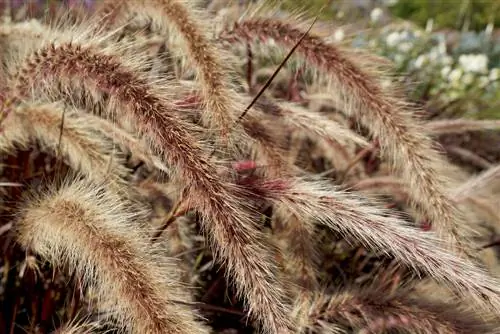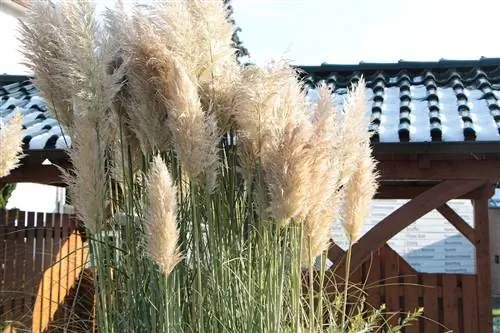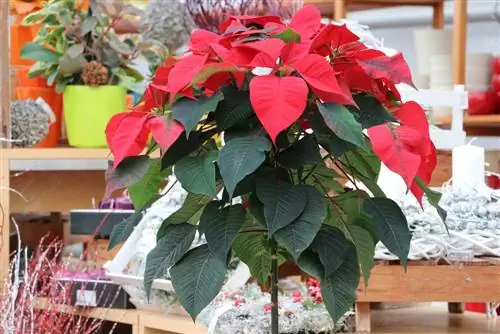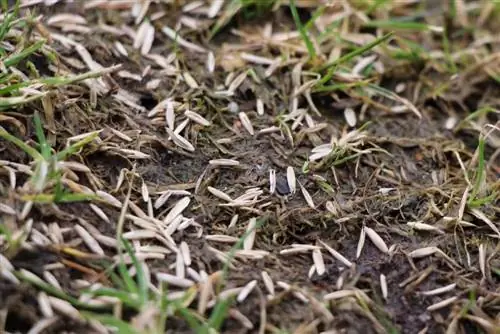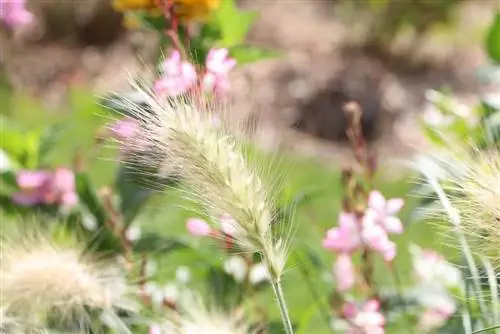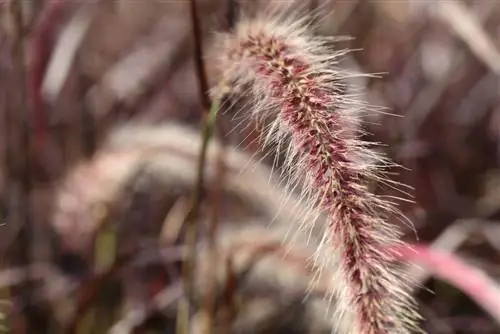- Author admin [email protected].
- Public 2023-12-17 03:39.
- Last modified 2025-01-24 12:45.
Not hardy and staying outdoors in winter, is that even possible?
Yes, if you help the ornamental grass a little because it is not hardy. Help includes:
- protection from the cold and
- a moisture protection
In addition, the ornamental grass must not be cut in autumn, because the old stalks provide additional protection for the roots of the grass.
Cold protection
The best protection from the cold is choosing the right location. If the feather bristle grass is to be planted outdoors over the winter, the location should be chosen so that it is protected from wind and weather in winter.
Tip:
A location in front of a wall or house wall is an ideal location for the winter, as walls and walls store heat and release it at night.
The roots of the grasses in particular need to be protected from the cold, because the Pennisetum grass doesn't like cold feet. Therefore, you can cover it on the ground with brushwood or grass clippings on very cold days. Good thermal protection, not just for the feet, is provided by a protective fleece that is wrapped around the tied stalks.
Tip:
Tie the stalks together to protect the roots from cold and moisture.
Wetness protection
Pennisetum grass doesn't like wet feet any more than it likes cold feet. That's why, in our latitudes, the cold, wet weather is more important for the ornamental grass than the cold itself. When it comes to overwintering outdoors, this means that the ornamental grass should only overwinter outdoors if it is guaranteed that the water can drain easily through the ground. If the soil is too impermeable, the water will damage the roots. If cold is added, the roots can even freeze, so it no longer matters that the ornamental grass is not hardy.
Winter hardy with a roof over your head
A location that has the best properties in summer and winter will be difficult to find. Therefore, you can definitely base your choice of location on the summer months. If it is not so well protected in winter, you can put a tent over the grass. Since it only grows up to 70 centimeters high, the tent doesn't need to be too big. It is important that it keeps wind, cold and moisture away from the ornamental grass.
Tip:
Build the tent generously around the grass so that the air can circulate well. Bamboo mats, a garden fleece, brushwood, straw, fir branches, grass clippings and mulch are suitable materials.
Overwintering in a bucket
Compared to overwintering outdoors, overwintering in a bucket is extremely easy. Simply bring the Pennisetum grass in the pot inside before the first frost. In order for it to overwinter well, the winter quarters should be cool but frost-free and dark - a little light doesn't hurt. There is hardly any watering during winter rest. Only if the soil is very dry should you water a little.
After overwintering
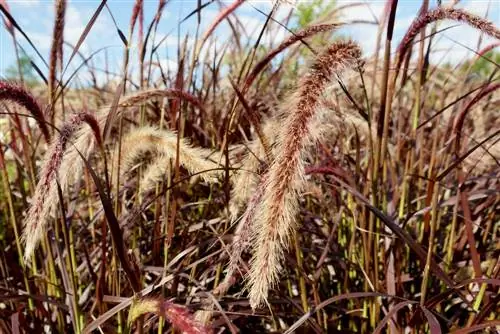
When wintering outdoors, not much needs to be done when temperatures start to rise again. If persistent frost is no longer expected, the winter protection can be removed. If the ornamental grass has overwintered indoors, it must first be accustomed to the light again. The window in the winter quarters is often enough for this. But it can also be placed outside in a protected place during the day, for example in a sunny corner. However, you should bring it back indoors during the night, as long as the temperatures are around five degrees Celsius.
Spring cut
Overwintering is considered complete when the old blades of the Pennisetum grass are cut off in spring.
Tip:
Since the upper part of the ornamental grass usually dies over the winter, the Pennisetum grass often looks very pitiful at the beginning of spring. Don't be impressed by this. After the spring cut it will soon look pretty and attractive again.
The optimal time for spring pruning is between April and May, depending on the weather. Since the cut in spring is a so-called radical cut, you can also trim the pennisetum vigorously. This means that you cut the stalks to a hand's width above the ground.
Tip:
If the grass was lush and well-grown last year, you should still cut it small, even if this is difficult at first. If the Pennisetum grass has been trimmed, you should fertilize it or provide it with compost, because it now needs a lot of nutrients to be able to sprout again.

